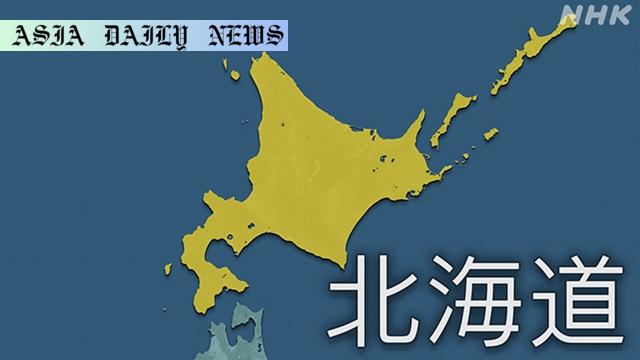Earthquakes have been hitting Hokkaido since late May, with officials urging the public to stay alert for potential tremors.
- Moderately strong earthquakes have been affecting Hokkaido since May.
- The Meteorological Agency highlights potential risks along the Chishima Trench.
- Officials recommend residents stay prepared for earthquakes.

Moderately Strong Earthquakes Shake Hokkaido
Since late May, Japan’s northernmost prefecture, Hokkaido, has experienced a series of moderately powerful earthquakes. The Meteorological Agency recently reported a magnitude-6.3 quake in the early hours of Monday, with its epicenter located off the coast of the Tokachi region. This quake registered an intensity of four on the Japanese seismic scale, which ranges from zero to seven.
The quakes have been isolated events occurring along the Pacific coastal areas of Hokkaido. Experts believe these tremors result from tectonic interactions where the Pacific Plate meets a continental plate. Despite their frequency, meteorologists have assured the public that these earthquakes are not strong enough to trigger larger seismic events. Nevertheless, they remain concerned about the possibility of a massive earthquake occurring at an unexpected time along the Chishima Trench.
Historical Context and Geographical Vulnerability
This region’s seismic vulnerability stems from its location near the convergent boundary between tectonic plates. A historical precedent exists in the form of the 2003 Tokachi-oki Earthquake, which reached a magnitude of 8.0 and caused considerable damage. The Chishima Trench, situated off Hokkaido’s coastline, is known to be an area of significant geological activity, heightening the risk of a substantial tremor at any time.
As Japan is a seismically active country, continuous monitoring and preparation are essential. The Meteorological Agency has highlighted the unpredictability of earthquakes in a region like Hokkaido, where fault lines and subduction zones intersect.
Preparedness and Public Awareness
In light of recent events, the Meteorological Agency recommends that residents of Hokkaido remain vigilant and adopt safety measures. Key steps include securing furniture to avoid toppling during tremors, creating evacuation plans, and storing emergency supplies such as food, water, and first-aid kits. Community awareness programs targeting earthquake preparedness are also critical, especially in vulnerable regions like Hokkaido.
While the agency reassures that the recent quakes are isolated and not precursors to larger events, they emphasize the importance of ongoing vigilance. Communication between meteorologists, local governments, and the public ensures that updates are readily available and preparations are adequate.
The Future of Earthquake Monitoring
Advancements in earthquake detection technologies have improved early warning systems in Japan. These systems are capable of providing real-time alerts to residents, enabling them to take precautionary measures prior to an earthquake. Innovations like predictive modeling and satellite imagery are also contributing to a deeper understanding of tectonic movements in the region.
Despite this progress, it remains impossible to predict the exact timing and location of the next major earthquake. Therefore, a proactive approach—focusing on readiness and resilience—remains the best defense against the unpredictable nature of seismic events in areas like Hokkaido.



Commentary
Understanding Hokkaido’s Seismic Activity
The spate of earthquakes hitting Hokkaido serves as a stark reminder of the region’s geophysical realities. Located at the meeting point of the Pacific and continental plates, Hokkaido is no stranger to tremors. However, the frequency of these events since late May has understandably prompted concern among residents and authorities alike. It is reassuring to note the Meteorological Agency’s statement that these recent quakes are isolated and unlikely to trigger larger seismic events. Nonetheless, history has taught us that nature is unpredictable, particularly in a tectonically active zone.
Learning from Historical Precedents
The 2003 Tokachi-oki Earthquake, which measured a colossal magnitude of 8.0, serves as a somber lesson for the residents of Hokkaido. The destruction caused by this quake underscores the importance of preparedness and proactive measures to mitigate potential damage in the future. While recent tremors are of much lesser magnitude, dismissing their risk entirely would be unwise. Enhancing public awareness of basic safety tips and fostering community-level disaster preparedness should remain a priority for local authorities.
Importance of Individual Preparedness
On an individual level, preparedness can make a significant difference in response to unexpected seismic activity. Residents should focus on securing their homes, identifying safe zones, and keeping emergency supplies on hand. Simple measures, such as bolting heavy furniture to walls and participating in community emergency drills, can reduce injuries and save lives. Additionally, staying informed through reliable channels ensures that residents can act swiftly in the event of an emergency.
Conclusion: Remaining Vigilant
While the recent tremors in Hokkaido may not signal an imminent catastrophe, they highlight the need for continuous vigilance and preparedness. By combining modern technology with traditional safety measures, both authorities and residents can navigate these challenges with greater resilience. Hokkaido’s seismic history ensures that caution is both necessary and prudent, making preparedness the key to safeguarding lives and property against potential threats.